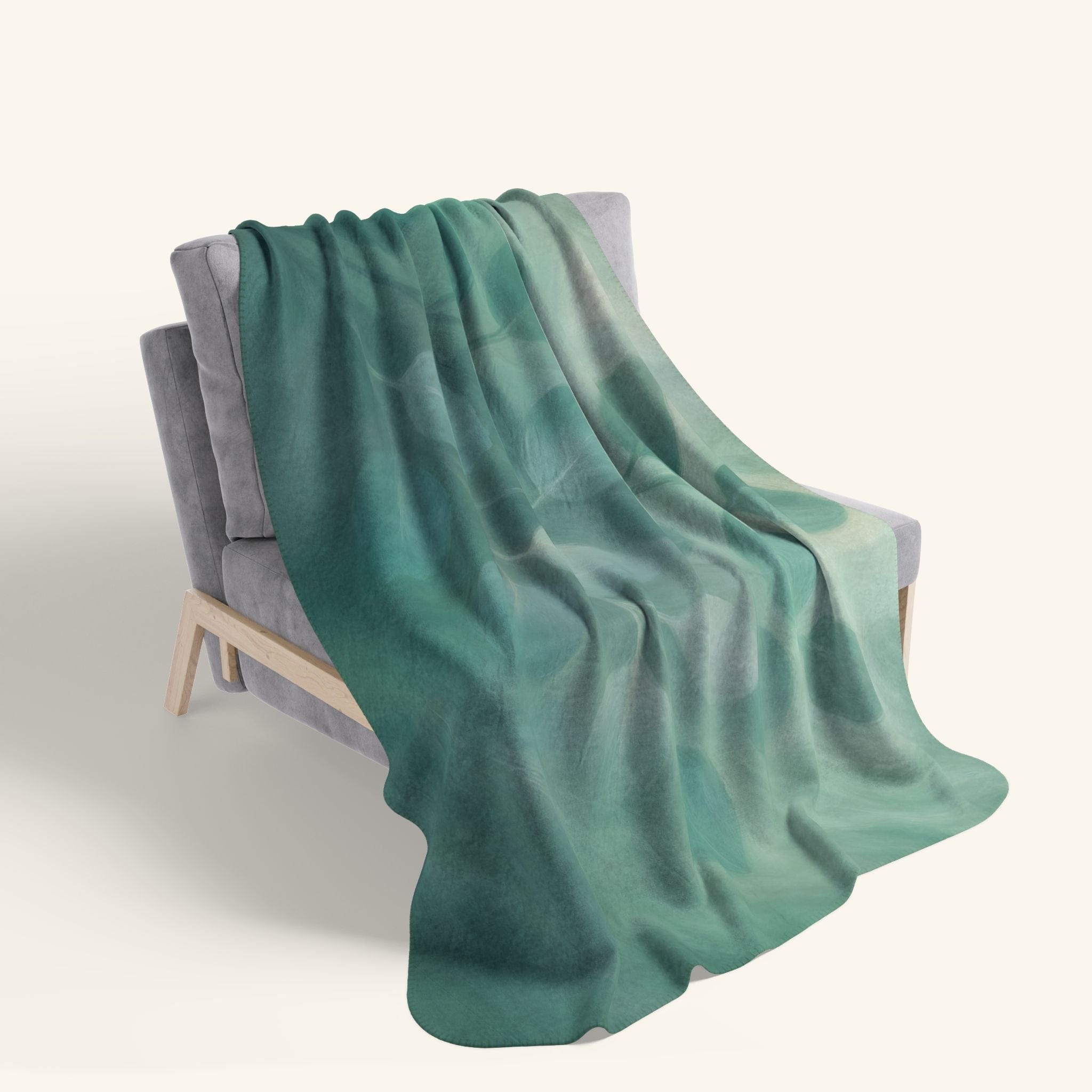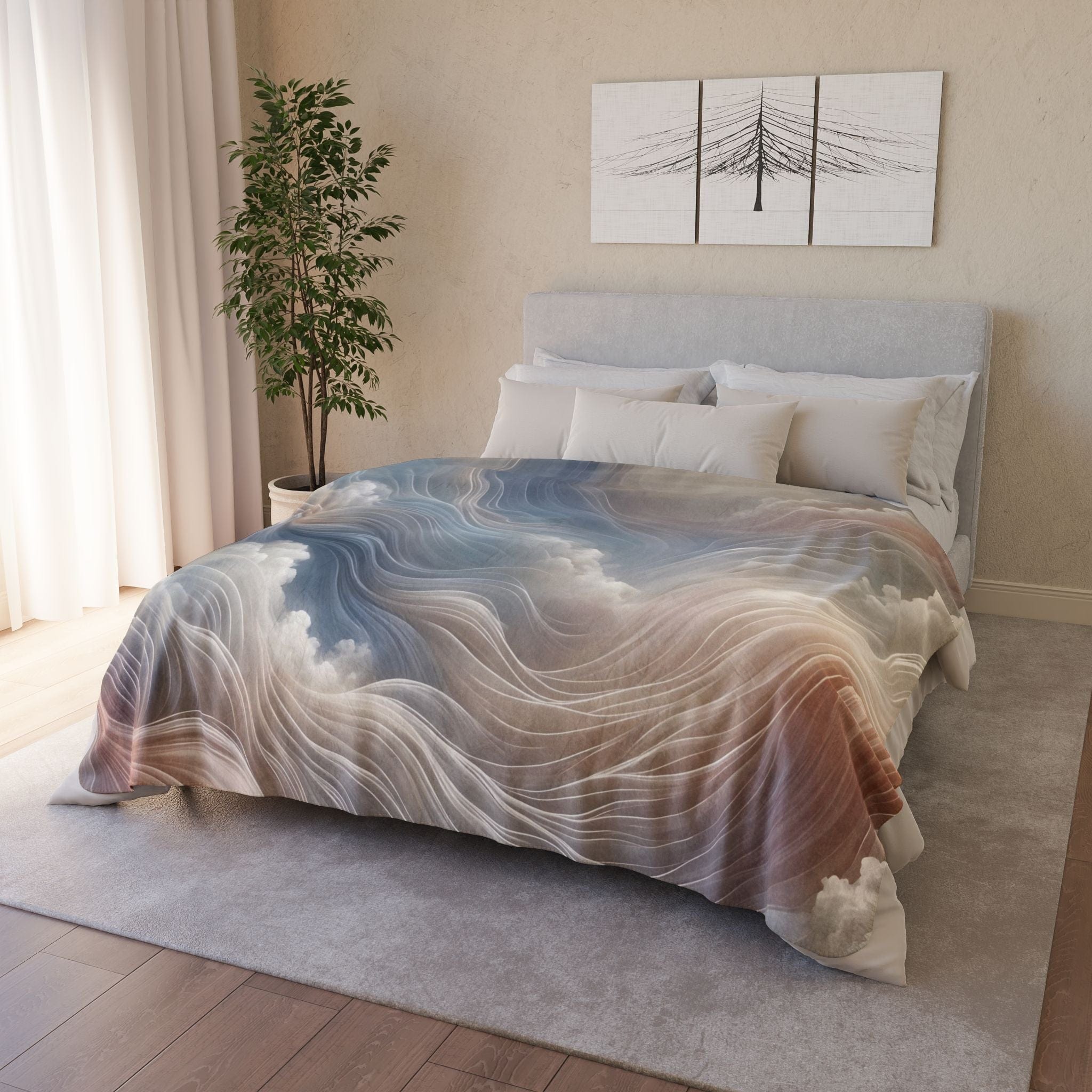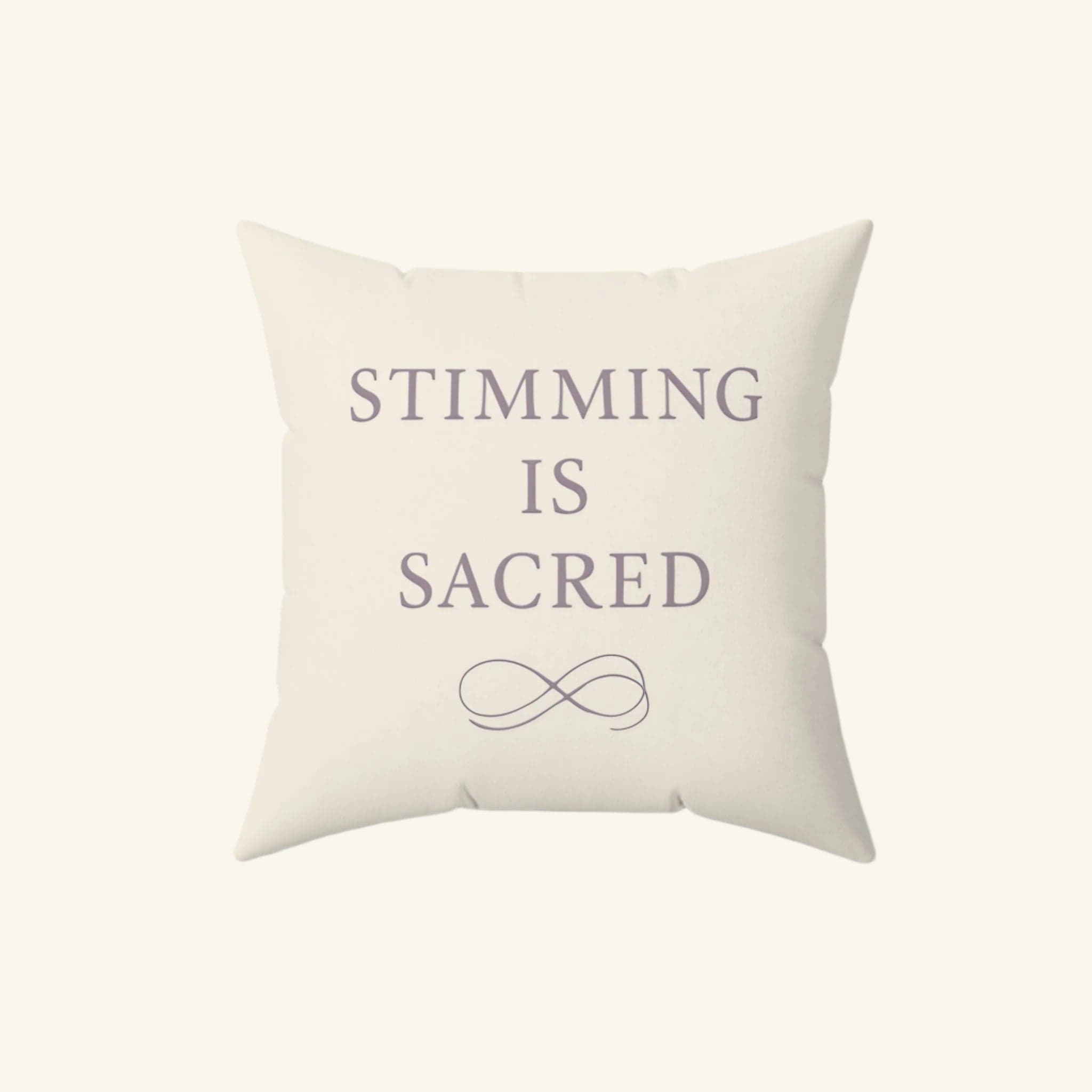Designing an Autism-Friendly Home: Creating a Supportive and Sensory-Friendly Space

Written by the HeyASD Editorial Team
Your home should be your refuge — a place where your senses can rest and you can truly exhale. For many autistic people, however, everyday environments can feel unpredictable or overwhelming, filled with sensory triggers that make it hard to unwind. Designing an autism-friendly home isn’t about perfection — it’s about creating calm, predictability, and comfort in ways that honor your sensory needs. This guide explores how to build a space that feels safe, supportive, and uniquely yours — where every detail works with you, not against you.
Understanding Autism-Friendly Home Design
Designing a home for an autistic person is about understanding their unique sensory needs. It involves a thoughtful approach to sensory processing, creating a balance of comfort, predictability, and personal control.
“For many autistic adults, comfort isn’t a luxury — it’s what makes daily life manageable.”
An autism-friendly home is tailored to the individual. It acknowledges that what soothes one person might overwhelm another. The goal is to create a space that supports the unique needs of its inhabitants, turning your home into a true sanctuary. Let's explore what makes these spaces different and why they are so important.
What Sets an Autism-Friendly Home Apart
A typical home is often designed for neurotypical sensory preferences, which can include bright lights, bold patterns, and open, noisy spaces. For autistic people, these elements can contribute to sensory overload. An autism-friendly home, in contrast, prioritizes sensory harmony and creates a safe space from the outside world.
The key difference lies in intention. Every design choice—from the color on the walls to the texture of the rugs—is made to accommodate sensory differences. This means softer lighting, muted color palettes, noise-dampening materials, and organized, clutter-free zones. It is a space designed to reduce stress, not add to it.
Ultimately, an autism-friendly home is a space that "meets you where you are." It empowers you by providing control over your sensory environment, fostering a sense of security and peace that is often hard to find elsewhere. It helps prevent autistic burnout by providing a place to recharge.
The Importance of Sensory Regulation and Predictability
Sensory regulation is at the heart of an autism-friendly home. Many autistic people experience the world with heightened sensitivity, where everyday sights, sounds, and textures can quickly become overwhelming. A home designed to manage these sensory challenges can significantly reduce the risk of sensory overload.
A predictable environment is a powerful tool for comfort. When you know what to expect, your mind can relax. Established routines, supported by the home's layout and organization, minimize surprises and the anxiety they can cause. Clear pathways, designated zones for activities, and consistent daily schedules create a soothing rhythm.
By reducing chaotic sensory input and establishing predictability, your home becomes a reliable sanctuary. This structure helps you conserve mental and emotional energy, allowing you to feel more in control and less exhausted by your surroundings.
Occupational Therapy Insights on Sensory Profiles
Occupational therapy offers valuable frameworks for understanding individual needs related to sensory processing. A helpful concept is understanding sensory profiles — everyone processes the world differently, and what is calming for one person may be agitating for another.
Some people are hypersensitive, meaning they are easily overwhelmed by sensory input. Others may be hyposensitive, meaning they might seek out more intense sensory experiences. Recognizing your own or your loved one's sensory profile is the first step toward creating a truly supportive environment. Trusting your instincts is key, especially for late-diagnosed autism when you're learning to understand your own needs.
Occupational therapists often suggest a "sensory diet" approach, which involves tailoring the environment to provide the right kind of sensory input throughout the day. This might include:
-
Creating quiet, low-stimulation zones for retreat.
-
Providing items for safe stimming, like fidget toys or textured surfaces.
-
Incorporating movement activities to help with body awareness and regulation.
Core Principles for a Sensory-Friendly Environment
To build a sensory-friendly home, you can focus on a few core principles that address common sensory sensitivities. These principles serve as a guide to help you manage sensory input and create a calming environment that feels supportive and safe.
Key Takeaways: Designing an Autism-Friendly Home
- An autism-friendly home is about comfort, predictability, and personal control — not perfection.
- Sensory harmony matters: use muted colours, soft textures, and gentle lighting to reduce overload.
- Every sense counts — balance sight, sound, touch, and smell with your unique sensory profile in mind.
- Organization builds peace: clear pathways, visual routines, and clutter-free spaces support calm and focus.
- Choice equals empowerment: adjustable lighting, varied seating, and flexible layouts foster safety and autonomy.
- Small changes create big relief — even one soothing corner can transform daily comfort and wellbeing.
Each principle targets a different sense—sight, touch, sound, and more. By thoughtfully considering each one, you can make intentional choices that transform your home from a source of stress into a place of comfort. The following sections will explore these principles in more detail.
Choosing Calm Color Palettes for Comfort
Color has a profound impact on mood and energy levels. For many autistic people, bright, saturated colors can be a source of intense visual stimulation and stress. A calm color palette is one of the easiest and most effective ways to create a soothing atmosphere.
Think in terms of muted, low-arousal colors. Subdued shades with gray undertones, like soft blues and greens, often have a calming effect. Neutral tones and earthy shades that mimic nature can also help ground the space and make it feel more peaceful. As one autistic homeowner noted, repainting a room from a "stressful peach" to a calming, muted green made it feel like they could "finally exhale and feel at peace."
When choosing colors, consider these tips:
-
Avoid bright primary colors, especially red, which can be agitating.
-
Opt for grey-green-blue shades, as recommended by firms like GA Architects [1], who specialize in design for autistic people.
-
Use matte or satin finishes instead of gloss to reduce glare from bright lights.
-
Avoid high-contrast patterns and glossy finishes that reflect light unpredictably.
Incorporating Gentle Textures and Tag-Free Fabrics
Touch is a powerful sense, and the textures in your home can either soothe or irritate. For those with sensory sensitivities, scratchy fabrics or rough surfaces can be a constant source of discomfort. Incorporating gentle textures is key to making a home feel truly comfortable.
Look for soft furnishings made from natural fabrics like cotton, velvet, or soft wool, as they are less likely to irritate the skin. Pay attention to the details—a plush rug, a smooth wooden table, or a soft throw blanket can make a world of difference. Your sensory preferences are unique, so choose what feels best to you.
When selecting items for your home, remember to:
-
Choose tag-free fabrics for bedding, towels, and clothing like autism hoodies to avoid that constant, scratchy irritation.
-
Prioritize soft furnishings, such as velvet couches, plush ottomans, and deep-pile rugs.
-
Layer different soft textures, like sensory blankets and calming pillows, to create a cozy and inviting space.
Managing Household Sounds for Reduced Overload
Sound can be one of the most challenging aspects of a home environment. From the hum of appliances to noises from outside, managing household sounds is crucial for preventing sensory overload. The goal is to reduce unwanted noise and control the intensity of sounds within your safe space.
There are two main ways to tackle noise: sound absorption and sound transmission. Sound absorption deals with noise inside a room. Adding soft surfaces helps soak up sound waves, reducing echo and creating a quieter atmosphere. Sound transmission is about blocking noise from entering a space, which often involves more structural changes.
Here are some practical ways to manage sound:
-
Add sound-absorbing materials: Heavy curtains, large area rugs, and upholstered furniture can significantly dampen noise.
-
Choose quieter appliances: When possible, select dishwashers, refrigerators, and fans with low decibel ratings.
-
Seal gaps: Use weather stripping around doors and windows to block out street noise.
Creating Room-by-Room Autism-Friendly Zones
Applying autism-friendly design principles room by room allows you to create a home that is consistently supportive. Each space has a different function, and tailoring it to meet sensory needs can improve focus, relaxation, and daily routines. This approach helps create clear transition spaces and reduces overall stress.
Whether you're setting up a calming sensory space or organizing the living room, thinking about the specific purpose of each room is key. The following sections offer ideas for the bedroom, living areas, kitchen, bathroom, and workspace, helping you meet your or your child's sensory needs throughout the home.
Designing a Calming Bedroom Retreat
The bedroom should be the ultimate calming space, a sanctuary for rest and recharging. To achieve this, focus on minimizing sensory input and maximizing comfort. This will help create a sense of security and make it easier to unwind after a long day.
Lighting is crucial. Use blackout curtains to block harsh sunlight and create complete darkness for sleeping. For artificial light, opt for warm-toned lamps with dimmable bulbs instead of bright overhead fixtures. This gives you control over the light's intensity, which can be adjusted to meet your sensory needs.
Soft furnishings add another layer of comfort. Choose breathable, tag-free bedding made from natural fabrics. Incorporate weighted comfort with sensory blankets, which provide deep pressure that can be incredibly soothing and promote better sleep. Keeping the room organized and free of clutter will also contribute to its peaceful atmosphere.
Sensory Balance and Organization in Living Areas
The living room is often a hub of activity, which can make achieving sensory balance a challenge. The key is to create defined zones for different activities, such as a quiet corner for reading and a separate area for more active pursuits. This organization helps make the space predictable and less chaotic.
Reducing visual clutter is one of the most impactful changes you can make. Clear surfaces and minimalist decor can instantly make a room feel calmer. Use storage with doors or drawers to hide items when they are not in use, which helps minimize distracting sensory experiences. This strategy is especially helpful for those who find visible items overstimulating.
Think about the flow of movement. Arrange furniture to create clear, unobstructed pathways between rooms. This avoids the low-level stress of navigating a cramped space. By balancing organization with comfort, you can transform your living room into a welcoming space for everyone.
Safe, Predictable Kitchen Spaces
The kitchen can be a place of sensory extremes, with strong smells, loud appliances, and sharp objects. Creating a safe and predictable environment is essential, especially when specific needs and routines are involved. Safety should always be the top priority.
Organization fosters predictability. Use clear labels on drawers and containers so everything has a designated place and is easy to find. This supports routines and promotes independence. For an autistic child, visual schedules outlining mealtime steps can also reduce anxiety around kitchen activities.
To enhance kitchen safety and comfort, consider these ideas:
-
Install secure locks on cabinets containing hazardous materials.
-
Choose appliances with low noise levels to reduce auditory overload.
-
Use non-slip mats on the floor and consider surfaces that are not prone to glare.
Bathroom Ideas for Comfort and Safety
The bathroom is a space for personal routines, and making it comfortable can have a big impact on the start and end of each day. Sensory sensitivities to temperature, light, and sound can make this room challenging, but a few adjustments can enhance comfort and safety.
Water temperature can be a major trigger. Installing a thermostatic mixing valve can help regulate water temperature and prevent sudden, uncomfortable changes. For lighting, use soft, warm bulbs instead of harsh fluorescent lights. A dimmer switch can provide even more control, allowing you to create a calming effect during a bath or shower.
Incorporate soft textures with plush bath mats and fluffy, tag-free towels. You can also keep sensory tools nearby, like a waterproof fidget toy. A calm paint color, like a pale grey or soft blue, can complete the transformation, turning your bathroom into a more peaceful and relaxing space.
Building a Focused and Flexible Workspace
For autistic adults, a home workspace needs to be a supportive environment that promotes focus and minimizes distractions. Creating a flexible space that you can adapt to your sensory input needs is key to productivity and well-being. This might be a dedicated room or a quiet corner of your home.
Managing sound is critical. If you can't install a solid-core door, consider using acoustic panels on the walls to absorb echo and distracting noises. Noise-canceling headphones are also a great tool for blocking out household sounds. A clutter-free desk and organized storage will help reduce visual distractions and maintain focus.
Lighting is another important factor. To create an ideal workspace:
-
Maximize natural light but use blinds or curtains to control glare.
-
Choose high-CRI lightbulbs (90+) for artificial lighting to ensure colors look accurate and reduce eye strain.
-
Select a color temperature that works for you—around 3500K is often good for focus without being too harsh. An autism app or autism AI tools can help you track what works best.
Emotional and Functional Home Upgrades
Beyond physical comfort, an autism-friendly home provides emotional and functional support. These upgrades are about creating a space that enhances emotional regulation and makes daily life easier. They empower you by fostering independence, predictability, and a sense of control.
These changes can have a profound impact on your overall quality of life. By focusing on routines, choice, and safety, you can design a home that not only feels good but also works for you. Let's look at how to implement these supportive upgrades.
Establishing Visual Routines and Clear Storage
Routines create a sense of security, and visual supports make them easier to follow. Visual schedules, which use pictures or words to outline tasks, are an excellent tool for reducing anxiety around transitions and daily activities. They provide a clear, predictable structure for the day.
Clear storage systems are just as important for reducing visual clutter and stress. While some organizing methods for ADHD recommend keeping everything visible, many autistic people find this overstimulating. Closed storage, like cabinets and drawers, hides items and creates a calmer environment. Labeling these storage spaces helps you find what you need without a frustrating search.
Here is an example of a simple visual schedule for a morning routine:
|
Time |
Activity |
Icon |
|---|---|---|
|
7:00 AM |
Wake Up |
☀️ |
|
7:15 AM |
Get Dressed |
👕 |
|
7:30 AM |
Eat Breakfast |
🥣 |
|
8:00 AM |
Leave for School/Work |
🎒 |
Supporting Choice, Control, and Safety in Every Room
A supportive environment is one that empowers you to meet your unique needs. Providing choice and control over sensory input is a fundamental part of this. When you can adjust your surroundings, you are better equipped to manage your energy and avoid overload.
This can be as simple as installing dimmer switches for lights, allowing you to control brightness levels throughout the day. Or it could mean having a variety of seating options—a firm chair, a soft bean bag, a cozy corner—so you can choose what your body needs in the moment. The ability to make these small choices can make a huge difference.
Safety is also a form of control. This includes physical safety, like installing secure locks and ensuring clear pathways, but it also means emotional safety. Your home should be a place where you feel free to be yourself, whether that means stimming openly or displaying art that reflects your autism pride.
Join Hundreds of Autistic Adults
Creating Calm, Supportive Homes
Use code WELCOME10 for 10% off your first order.
Discover décor and sensory comforts made by and for the autism community.
Conclusion
Designing an autism-friendly home is more than decorating — it’s about creating a space that supports your peace, sensory balance, and sense of belonging. By embracing the principles of sensory regulation and honoring individual needs, you can transform your environment into a true sanctuary.
Perfection isn’t the goal — presence is. Every small, mindful change, from soft lighting to calming textures, adds up to a home that feels safe and restorative. What matters most is that your space meets you where you are and gives you room to exhale.
As you continue this journey, remember that comfort is not a luxury — it’s a foundation for wellbeing. Explore our sensory-friendly décor and blankets thoughtfully created by the autistic community, and take the next step toward a home that truly feels like yours.
Frequently Asked Questions
What are affordable ways to make living spaces more sensory-friendly for autistic adults?
For an autistic adult, affordable sensory-friendly changes can include rearranging furniture for better flow, decluttering surfaces, and swapping harsh light bulbs for warmer, dimmable ones. Adding a soft rug or heavy curtains from a thrift store can also help dampen sound. These small changes address sensory needs without a big budget.
Which household items or furniture work best in an autistic-friendly home?
Soft furnishings like velvet couches, plush rugs, and bean bags are excellent choices. A sensory room or corner can be equipped with weighted blankets, fidget toys, and items for tactile exploration. Furniture with rounded corners is safer and can reduce accidental bumps. The key is choosing items that feel good to you.
How does lighting design support comfort for autistic individuals?
Lighting design is crucial for managing sensory sensitivities. Avoid harsh, bright lights like fluorescents. Instead, maximize calming natural light with sheer curtains, and use warm, dimmable lights for artificial lighting. Light projectors with gentle patterns can also create a soothing visual effect in a quiet space.






















